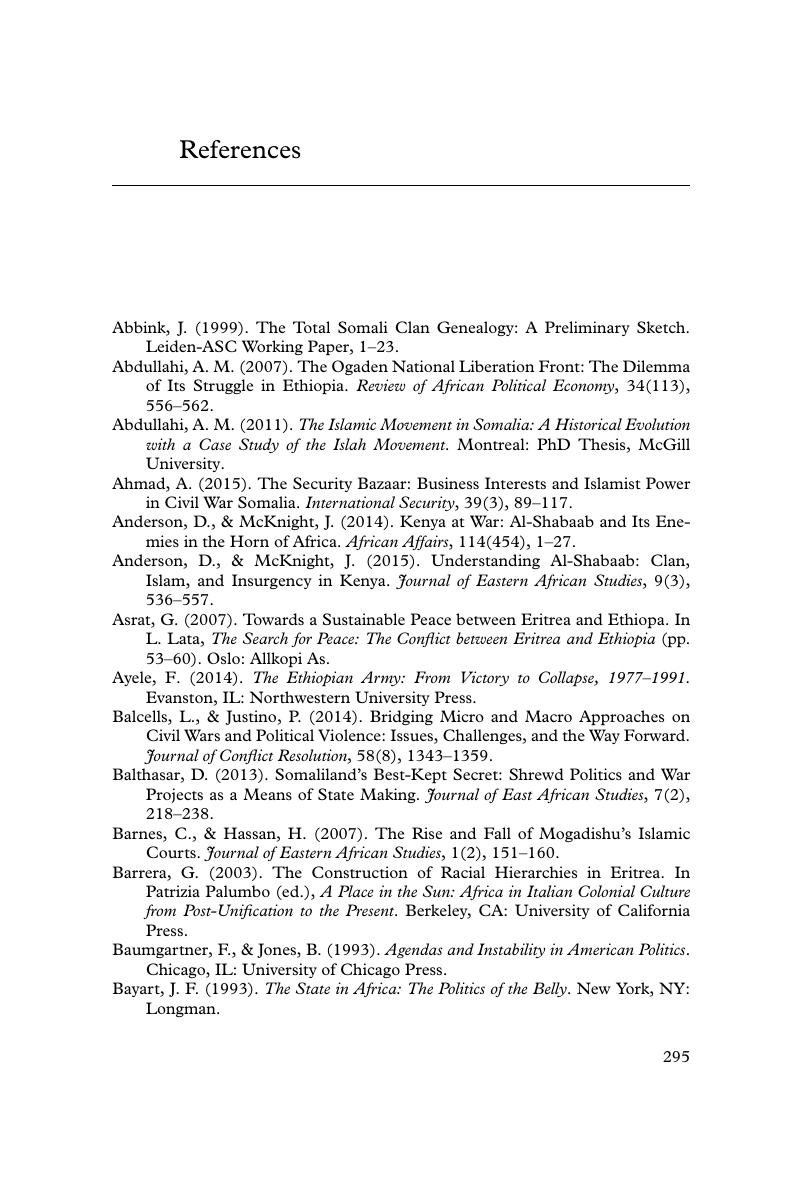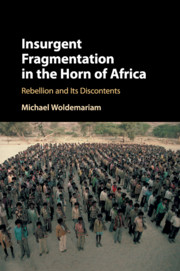Book contents
- Reviews
- Insurgent Fragmentation in the Horn of Africa
- Insurgent Fragmentation in the Horn of Africa
- Copyright page
- Contents
- Figures
- Tables
- Acknowledgments
- Acronyms
- Part I Theory and Concepts
- Part II Rebellion in Ethiopia and Eritrea
- Part III Rebel Fragmentation in the Broader Horn
- Appendix: Narrative of Fieldwork and Description of Data Sources
- References
- Index
- References
References
Published online by Cambridge University Press: 09 February 2018
- Reviews
- Insurgent Fragmentation in the Horn of Africa
- Insurgent Fragmentation in the Horn of Africa
- Copyright page
- Contents
- Figures
- Tables
- Acknowledgments
- Acronyms
- Part I Theory and Concepts
- Part II Rebellion in Ethiopia and Eritrea
- Part III Rebel Fragmentation in the Broader Horn
- Appendix: Narrative of Fieldwork and Description of Data Sources
- References
- Index
- References
Summary

- Type
- Chapter
- Information
- Insurgent Fragmentation in the Horn of AfricaRebellion and its Discontents, pp. 295 - 306Publisher: Cambridge University PressPrint publication year: 2018



